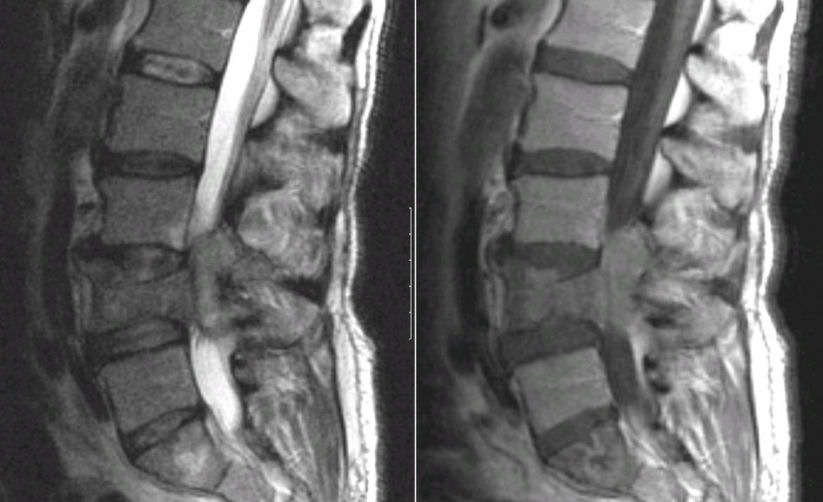
|
A 65 year-old man presented with a three week history of progressive paraplegia and incontinence. He had a recent diagnosis of adenocarcinoma of the lung. |

![]()
![]()
| Cauda Equina Compression:
Sagittal MRI scan of the Lumbar Spine; (Left) T2-weighted image; (Right) T1-weighted image. Note the large
tumor arising from the L4 vertebra compressing the cauda equina. In adults, the spinal cord terminates at approximately the L1 vertebral body. Below that level, the lumbosacral nerve roots run in the thecal sac and are known as the cauda equina. Compression of the cauda equina may present in a similar manner to spinal cord compression, with the exception that the cauda equina contains lower rather than upper motor neurons. Thus, paraplegia due to cauda equina compression is associated with loss of tone and atrophy, and depressed or absent reflexes. There are no Babinski responses. Cauda equina compression with neurological compromise, similar to spinal cord compression, is a neurological/neurosurgical emergency requiring urgent therapy with a combination of high dose corticosteroids, radiation, and surgical decompression. |
Revised
11/22/06
Copyrighted 2006. David C Preston